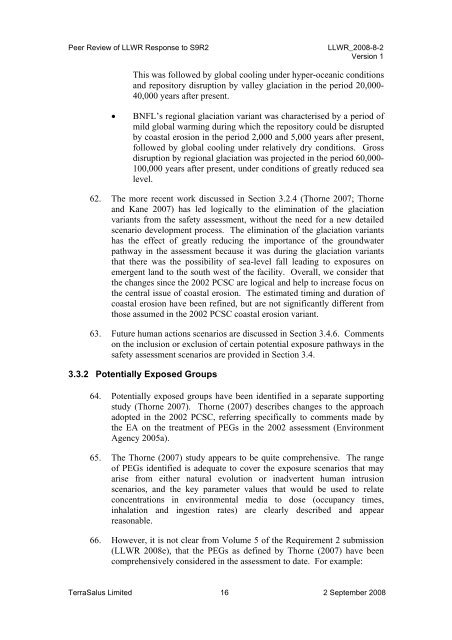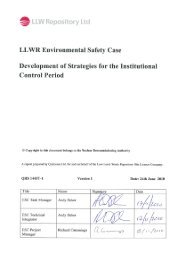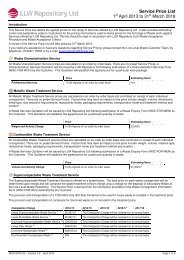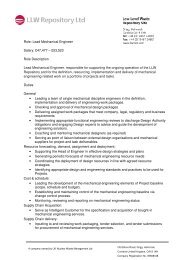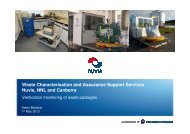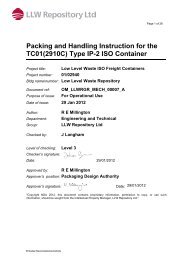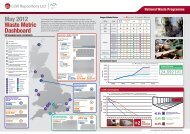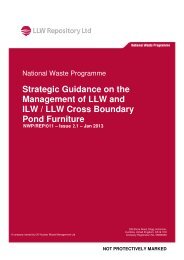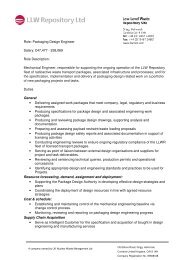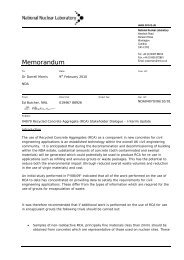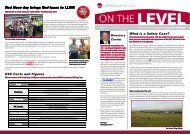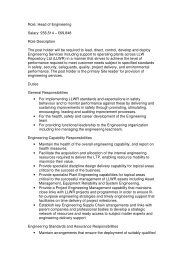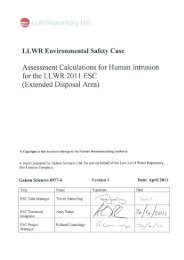Independent Peer Review of - Low Level Waste Repository Ltd
Independent Peer Review of - Low Level Waste Repository Ltd
Independent Peer Review of - Low Level Waste Repository Ltd
Create successful ePaper yourself
Turn your PDF publications into a flip-book with our unique Google optimized e-Paper software.
<strong>Peer</strong> <strong>Review</strong> <strong>of</strong> LLWR Response to S9R2LLWR_2008-8-2Version 1This was followed by global cooling under hyper-oceanic conditionsand repository disruption by valley glaciation in the period 20,000-40,000 years after present.BNFL’s regional glaciation variant was characterised by a period <strong>of</strong>mild global warming during which the repository could be disruptedby coastal erosion in the period 2,000 and 5,000 years after present,followed by global cooling under relatively dry conditions. Grossdisruption by regional glaciation was projected in the period 60,000-100,000 years after present, under conditions <strong>of</strong> greatly reduced sealevel.62. The more recent work discussed in Section 3.2.4 (Thorne 2007; Thorneand Kane 2007) has led logically to the elimination <strong>of</strong> the glaciationvariants from the safety assessment, without the need for a new detailedscenario development process. The elimination <strong>of</strong> the glaciation variantshas the effect <strong>of</strong> greatly reducing the importance <strong>of</strong> the groundwaterpathway in the assessment because it was during the glaciation variantsthat there was the possibility <strong>of</strong> sea-level fall leading to exposures onemergent land to the south west <strong>of</strong> the facility. Overall, we consider thatthe changes since the 2002 PCSC are logical and help to increase focus onthe central issue <strong>of</strong> coastal erosion. The estimated timing and duration <strong>of</strong>coastal erosion have been refined, but are not significantly different fromthose assumed in the 2002 PCSC coastal erosion variant.63. Future human actions scenarios are discussed in Section 3.4.6. Commentson the inclusion or exclusion <strong>of</strong> certain potential exposure pathways in thesafety assessment scenarios are provided in Section 3.4.3.3.2 Potentially Exposed Groups64. Potentially exposed groups have been identified in a separate supportingstudy (Thorne 2007). Thorne (2007) describes changes to the approachadopted in the 2002 PCSC, referring specifically to comments made bythe EA on the treatment <strong>of</strong> PEGs in the 2002 assessment (EnvironmentAgency 2005a).65. The Thorne (2007) study appears to be quite comprehensive. The range<strong>of</strong> PEGs identified is adequate to cover the exposure scenarios that mayarise from either natural evolution or inadvertent human intrusionscenarios, and the key parameter values that would be used to relateconcentrations in environmental media to dose (occupancy times,inhalation and ingestion rates) are clearly described and appearreasonable.66. However, it is not clear from Volume 5 <strong>of</strong> the Requirement 2 submission(LLWR 2008e), that the PEGs as defined by Thorne (2007) have beencomprehensively considered in the assessment to date. For example:TerraSalus Limited 16 2 September 2008


